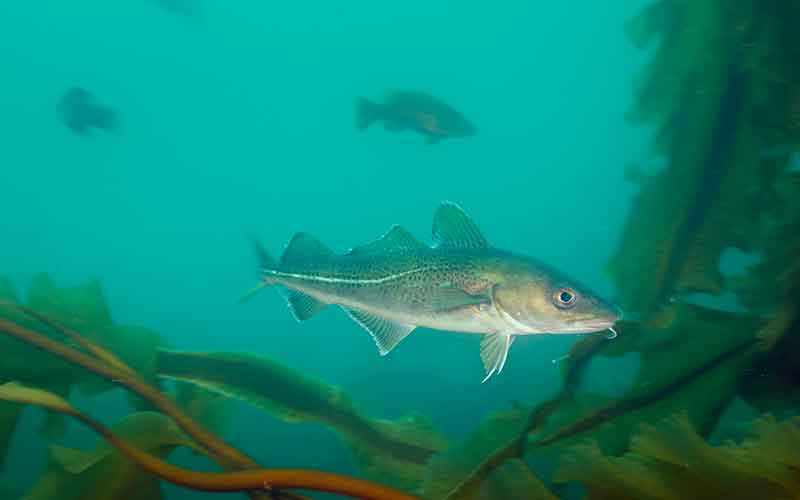
Gulf of Maine cod may have a fighting chance thanks to a new plan aimed at rebuilding their ailing population. Photo: Brian Skerry
Decades of overfishing and risky decision-making by fishery managers, combined with the impact of climate change, have left Atlantic cod facing an upstream battle.
Cod once formed the backbone of New England’s fishing industry. But today, their population numbers in the Gulf of Maine and on Georges Bank hover near historic lows. Management decisions have so far failed to turn the tide for the iconic species. And it’s not only the fish that have struggled. Our fishing communities have also paid the price.
Turning this situation around by bringing cod numbers back to healthy levels will require bold action. Late last year, our regional fishery managers took a step in that direction for Gulf of Maine cod.
CLF Pushes for Sustainable Fisheries
CLF is working to build a sustainable cod fishery in New England. We want plentiful cod populations to help support a healthy ocean and thriving coastal economies.
For years, we’ve pushed fishery managers to implement conservative, science-based catch limits for cod. We’ve also advocated for greater protections for habitats where cod can spawn, grow, and flourish.
Recently, we saw success with the approval of an action to increase at-sea monitoring coverage in the cod fishery. Increased monitoring will finally provide fishery managers and scientists with accurate data about the number of cod caught – data that is necessary to manage the fishery sustainably.
Progress: Managers Adopt A New Plan to Help Restore Gulf of Maine Cod
After successful advocacy by CLF, regional fishery managers have now adopted a new plan to rebuild the cod population. The plan focuses only on cod in the Gulf of Maine, but it is the strongest rebuilding plan adopted to date.
When a fish population falls below a certain level, the Magnuson-Stevens Act, our federal fisheries law, requires managers to develop a plan to boost the population back to a healthy size. Such plans typically adjust the level of fishing allowed to take some pressure off the fish. Two previous attempts to rebuild the Gulf of Maine cod population failed. So in August 2021, NOAA Fisheries ordered the New England Fishery Management Council to develop a third, more effective plan to save the population.
In December 2022, the Council voted for a new 10-year rebuilding plan for Gulf of Maine cod. The plan sets a new rate at which cod can be fished, with the goal of easing pressure on the struggling population and allowing it to recover by 2033. The new fishing rate is lower than that of past rebuilding plans, giving this latest plan a higher chance of success. The Council also added an extra level of caution by opting to hold catch limits constant for the first two years.
Given that this is the third rebuilding plan for Gulf of Maine cod in 20 years, strong action was called for. While the Council did not vote for the most stringent option on the table, managers did make a difficult decision that considered both the health of cod and the long-term needs of fishing communities.
Next Steps: Additional Measures Needed
NOAA Fisheries must still review and approve the Council’s new plan before it can be implemented. Also, while the new plan takes a step in the right direction, it is still not enough.
Additional measures like new spawning protections are also critical to help cod. So is the protection of other essential habitat areas, such as the Northern Edge of Georges Bank and Cashes Ledge.
We are also awaiting the results of a new cod stock assessment. These results can potentially shift the management of cod as we know it. Cod is currently managed as two stocks (Gulf of Maine and Georges Bank), but we could soon see cod being managed as four or five. This will present new challenges for managers and scientists to wrestle with – but it could also lead to more positive progress.
With your support, CLF will continue its advocacy before the New England Fishery Management Council and NOAA Fisheries to ensure that cod’s future is as bright as its past.



